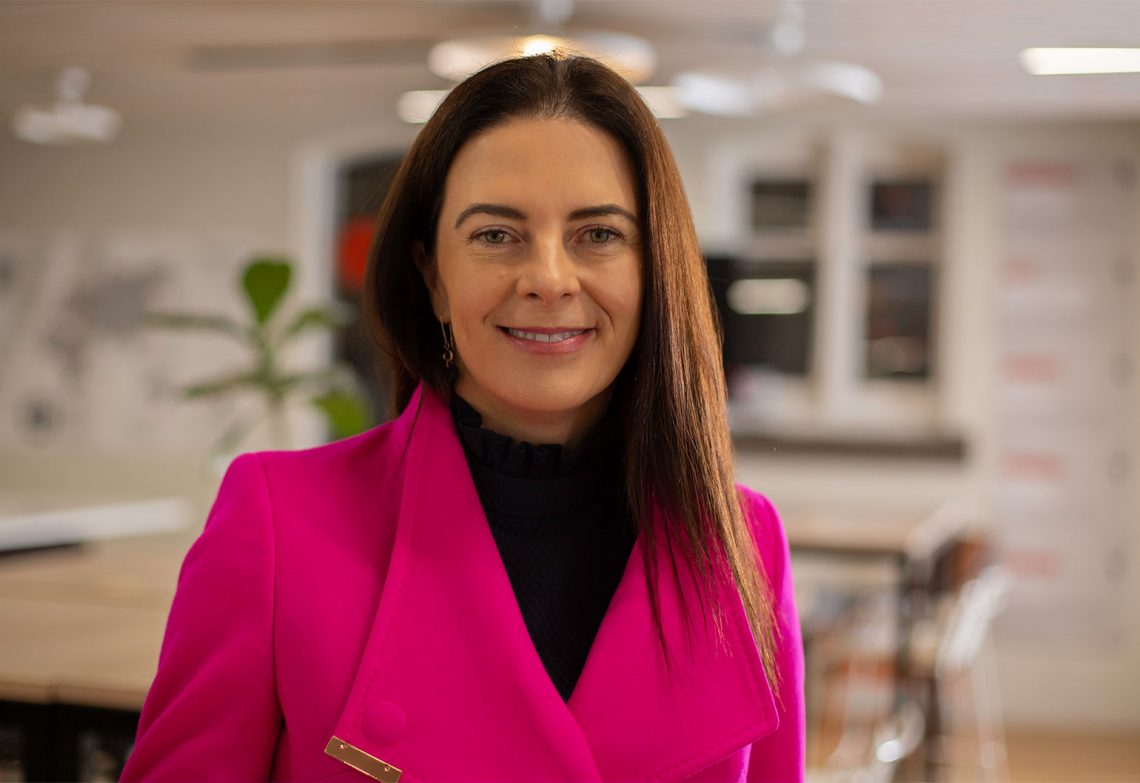Almost 30 years after beginning her career at the CSIRO as a research assistant, Dr Bronwyn Fox is returning to Australia’s national science agency.
This time, though, she is doing so as the organisation’s chief scientist.
Fox, a materials engineer who was most recently Deputy Vice-Chancellor (Research and Enterprise) at Swinburne University of Technology, credits the CSIRO for first stoking her interest in engineering.
“I was working at CSIRO after my [chemistry] degree, and I could see that the engineers were making things and testing them, whereas I was doing chemical experiments that weren’t necessarily always working,” she said.
“I just wanted to make things and break them, then collect data. That was what really got me interested in engineering.”
Returning to study, Fox enrolled at the Australian National University (ANU) to complete a PhD specialising in carbon fibre composites.
“They’re a combination of chemistry and engineering, and it just happened to be a really good fit for my interests,” she explained.
“There was some new composite activity that had just started at ANU, and that’s why I decided to go up there.”
Carbon fibre composites are a class of extremely strong yet lightweight fibre-reinforced plastics that are used in anything from passenger aircraft to Formula One motor racing.
“These materials have transformed the way we look at transportation and have applications in automotive and aerospace,” Fox said.
Fox has driven many improvements in advanced materials throughout her career, helping to make the carbon fibre composites easier, faster, and cheaper to produce, as well as collaborating with major companies including Boeing, Siemens, Ford and Daimler.
She was also founding research director of Carbon Nexus, a Deakin University facility that develops new technologies, processes and products using carbon fibre.
Following that, she joined Swinburne as Director of the Factory of the Future, a dedicated space for research and teaching in manufacturing and design-led innovation. She then became founding Director of Swinburne’s Manufacturing Futures Research Institute, which focuses on Industry 4.0 — a revolutionary approach that applies digitalisation to the manufacturing sector.
Although she finished her role as research assistant at the CSIRO in 1996, Fox has worked with the organisation over the years.
“It is wonderful to return to CSIRO as Chief Scientist after starting as a 22-year-old research assistant, and to be able to champion science research and capability, working with industry and fostering STEM careers,” she said.
“The depth of scientific research at CSIRO and its committed people are a unique and special national treasure and I look forward to taking up the role.”
CSIRO Chief Executive Dr Larry Marshall highlighted the deep experience Fox brings to the agency.
“She has a long history of bringing together researchers from across multiple scientific domains and institutions, leveraging digital science, and helping industry to translate brilliant ideas into real world solutions,” he said.
“Her sustained commitment to supporting the growth of the manufacturing industry in Australia strongly supports our purpose to deliver solutions from science that drive Australia’s economic recovery and resilience.”
As well as her position at Swinburne University, Fox is also Chair of the Australian Academy of Technology and Engineering (Victorian Division), a Fellow of the Academy of Technological Sciences and Engineering (ATSE), a Fellow of the Royal Australian Chemical Institute (RACI) and a Graduate of the Australian Institute of Company Directors (GAICD).
In 2018, her achievements were recognised by the Global Congress on Manufacturing and Management, which bestowed on her its Research Leadership Award.
“Bronwyn exemplifies the CSIRO way,” Marshall said.
“Driven to deliver, brilliant but humble, leading by listening, and a generous collaborator.”




Let’s hope she can address the restrictive and soul destroying CSIRO culture that everything they do must be a commercial success, and get back to pure research, things that our scientists do so well